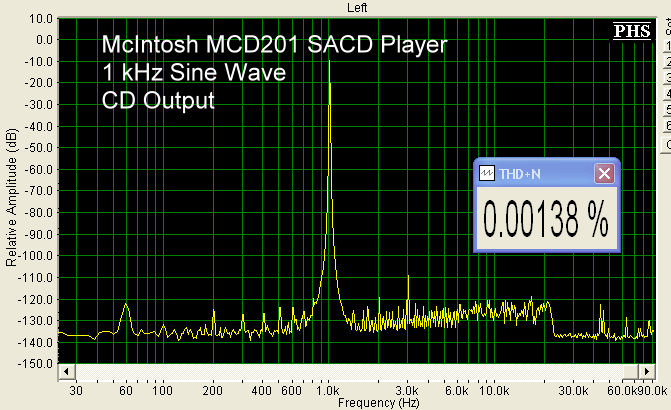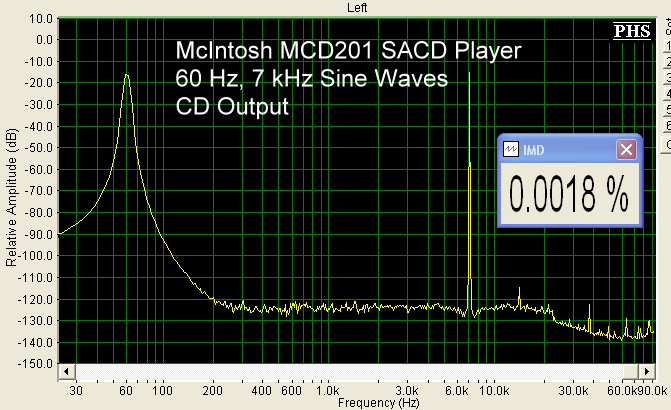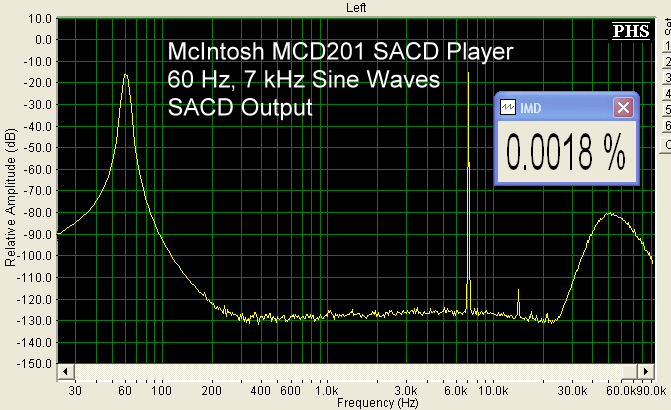|
||||||
|
On the Bench The frequency response of the MCD201 was flat (within 0.5 dB) between 5 Hz and 30 kHz (for SACD), then rolled off. This is good, because SACD introduced noise above 30 kHz (it is the way SACD works). And, as I said, even though SACD has a high frequency response, there is no point to it going above 30 kHz. In CD mode, THD+N was 0.001%. You can see the response decrease above 20 kHz, which is normal for CD.  In SACD mode, THD+N at 1 kHz measured 0.09%. This is higher than spec, but it includes the noise spectra above 30 kHz. Notice that above 1 kHz, up to 20 kHz, there are many more small peaks in the CD spectrum than in the SACD spectrum. I suspect this may be partly responsible for the increased audible detail in SACD recordings.
Using an SMPTE standardized test, IM measured 0.002%, in CD mode.
In SACD mode, IM was the same as with CD.
At 10 kHz, in SACD mode, THD+N was 0.09%.
Using 19 kHz and 20 kHz, the A+B peak at 39 kHz was lost in the noise spectra. The B-A peak at 1 kHz was barely perceptible.
At 30 kHz, THD+N was 0.095%.
Finally, using 39 kHz and 42 kHz, the B-A peak, at 3 kHz, was 99 dB below the fundamentals.
Conclusions The McIntosh MCD201 is a superb player. High resolution audio is the future, for audiophiles by choice, and for mass market consumers by default. The universal mass market players will deliver SACD in good shape, but it will take something like the MCD201 to do it full justice.
- John E. Johnson, Jr. -
|
||||||










